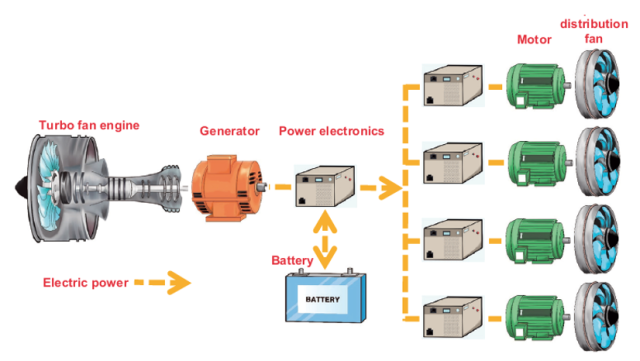Research and Development of Advanced Aircraft Systems for Practical Application
Project overview
Aircraft components other than the basic structure (e.g. fuselage, wings, and similar sections) and engines are collectively called “systems.” There are many system types, such as flight control, air-conditioning, electric, hydraulic and fuel. They have a direct impact on the function and performance of aircraft, and are indispensable elements of aircraft operation. Demands for passenger aircraft are expected to grow dramatically with a doubling of the number over the next 20 years. Aircraft systems, which account for approximately 40% of the total aircraft value, are thus very important.
To take advantage of Japanese system manufacturers’ technical competence to enter the system market on a full scale, and to increase market share, this project is intended to develop lightweight, low-cost, and safe systems for next generation aircraft that can enter service from the mid-2020s. Thus, Japanese system manufacturers will enhance their competence as system integrators to become Tier 1 manufacturers, and contribute to the further development of the Japanese aircraft industry.
-
 Project Overview
Project Overview
Description of Research and Development
High-efficiency, high-output electric propulsion system
A high-efficiency, high-output density electric propulsion system using superconductor technology. It will be driven by electricity generated with a gas turbine. Superconductor equipment will be cooled by LN2 using the cold heat of the fuel (LH2, etc.). Basic and systematization research will be promoted for superconductor power generators/cables/motors, low-temperature operating inverters, cooling systems and other devices, with the focus on trial production and evaluation of 500 kW-class fully superconducting motors and 1-MW superconductor propulsion systems, with the aim of realizing electric engine systems for 100- to 200-passenger aircraft.
Lightweight batteries
Design of cells and battery control systems and evaluation of prototypes will be conducted to develop battery systems required for electric aircraft. Conversion to electric aircraft engines is expected in the future to reduce the environmental burden and other purposes, but existing batteries are still too heavy for use on a practical level. To realize practical energy level of lightweight batteries for aircraft, research and development of batteries using sulfur as the positive electrode active material will be promoted. Particular effort will be made in the research and development of porous carbon particles containing sulfur.
Electric hybrid system
A new-generation electric engine system to replace the existing propulsion systems will be applied to realize dramatically lower fuel consumption and environmental burden. In addition to measures against global warming, the system will contribute to the improvement of the safety and operability of moving vehicles utilizing the improved controllability realized by more sophisticated engine systems. Materials and structures that will enable high-voltage use at high altitudes, a specific challenge concerning the introduction of electric propulsion, will be identified, and on-land demonstration of a next generation electric engine system will be conducted with the focus on electric control and heat/air management systems.
Motor control system for propulsion
A globally competitive product will be developed by including Multiphysics optimum analysis in design and applying superior element technologies to the motor inverter to create a high-power high-density air-cooled motor inverter system. Consideration for certification will also be conducted to realize the motor control system for propulsion.
Basic information
| Technical field |
|
|---|---|
| Project code | P15005 |
| Department in charge |
|
Last Updated : December 19, 2024
